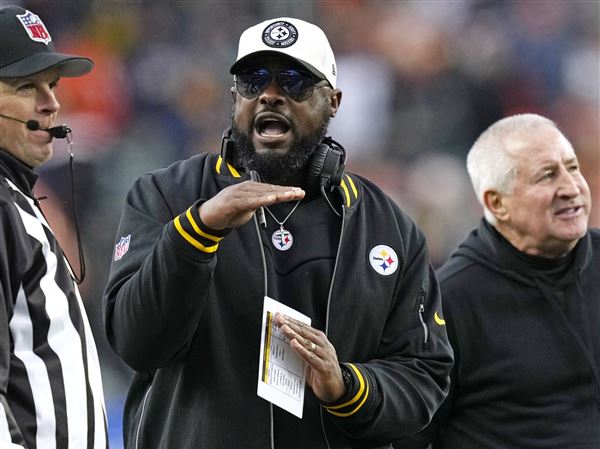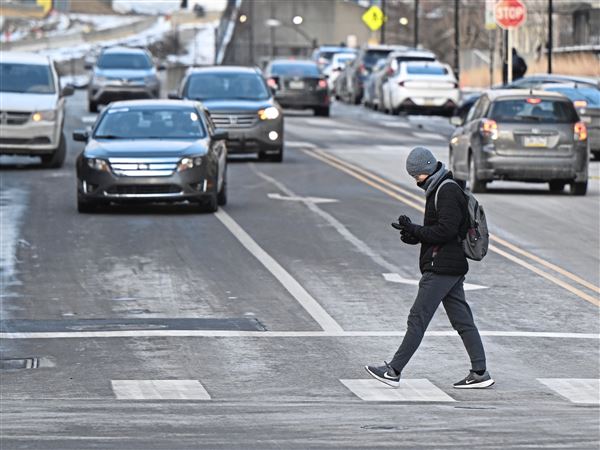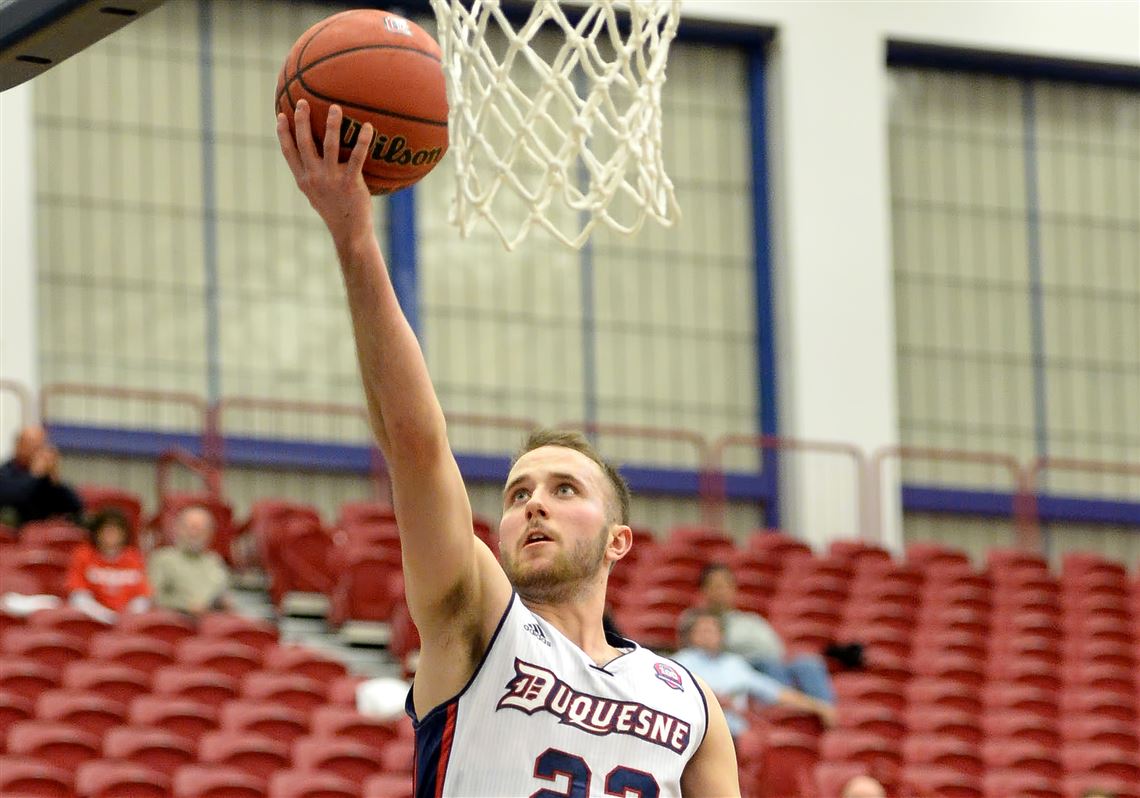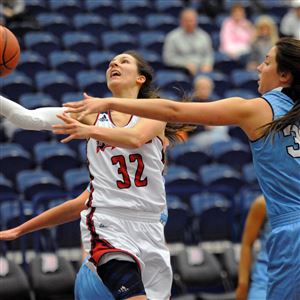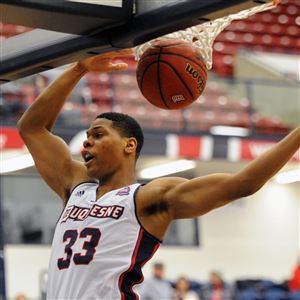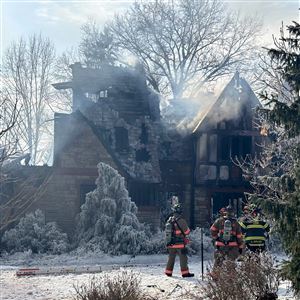Around the time he officially took over as Duquesne’s athletic director in October, Dave Harper commissioned an independent third party to make an assessment of the school’s athletic department.
The study’s results were comprehensive and, at times, scathing. When the topic turned to the game atmosphere and in-arena experience for the university’s marquee athletic program, men’s basketball, one word summed up a pointed criticism.
“Lacking,” Harper said. “That’s how it was worded.”
For as much as the Dukes have staggered on the court the past four decades, they have struggled just as much off it lately.
Attendance has dwindled each of the past three seasons. The culture surrounding the program, at least on game days, has been engulfed by apathy or, some would argue, outright negativity. Home-court advantage, which some studies have estimated to be worth an extra four points for the home team, has been minimal and perhaps even nonexistent.
Now into his sixth month on the job, those realities are among the first things that jump out to Harper. Heading into Duquesne’s home finale Wednesday against Fordham, correcting them is among his top priorities as he tries to reshape and re-brand an athletic department.
“You can make a great game even better and you can take a bad game and make it not so bad by some of the things you do for fans,” Harper said. “That’s how we’re going to focus and go about it. There’s a script for a game and a script for attending a game that we want to have a really strong rhythm to. We want to make sure people, regardless of outcome, feel really good about the value they receive, the experience they have and that they’re valued as fans. That’s going to be a big focal point.”
The biggest factor in that equation, as Harper or anyone else in athletics would acknowledge, is increasing the number of people in the stands.
Men’s basketball attendance has fallen in each of the past three seasons, dropping from an average of 3,400 in 2012-13, coach Jim Ferry’s first season, to 1,950 this season with one game remaining. Unless Duquesne attracts a crowd of at least 2,750 tonight, it will fail to average 2,000 fans per game for the first time since the 2005-06 when the Dukes finished 3-24.
Given the program’s struggles the past 40 years — the Dukes have finished with a losing record 27 times in the past 34 seasons — that grim picture becomes easier to understand, especially with a portion of the fan base still seething from the surprising decision in 2012 to fire Ron Everhart, the coach responsible for five of those seven winning seasons.
That lackluster record also has created a generational gap, perhaps most evident inside Palumbo Center for games. A large percentage of attendees are older fans who were alive to experience Duquesne’s greatest success nearly 50 years ago. Beyond that, however, are more recent graduates and current students who have only stories and banners on which to fall back.
“For someone who is involved and who looks at the banners, there are only so many times you can talk about the greatness of Chuck Cooper,” said John Foster, president of Duquesne’s student government association. “Students want someone they can relate to in their experience. There is a disconnect in that we hear about Duquesne’s heyday and the glory days, but students kind of scratch their heads and ask ‘What happened?’ ”
The sparsely filled student section for many games is a product of more than the team’s shortcomings. A school official said one-third of Duquesne’s roughly 9,000 full-time students live off campus, while a 2015 university fact book noted there are only about 4,000 beds available in on-campus housing, both of which make consistent basketball attendance problematic.
Harper and Megan Jahrling, the school’s new assistant athletic director for marketing and branding, have worked to strengthen relationships with student groups and the community. Their strategy is based around trying to come up with innovative ways to market and brand the program beyond an assortment of one-game promotions.
Many of the changes to the gameday experience won’t be decided on until the offseason. For now, Harper has talked about improving concessions, entertainment at halftime and timeouts, and trying to avoid scheduling games on the same night the Penguins play at nearby Consol Energy Center. He also added the department is in the early stages of determining what it can do to enhance Palumbo Center beyond just the game experience.
For a new regime looking to overhaul the perception of a stagnant program, there’s a certain comfort knowing they have some kind of foundation on which to build.
“You walk in and you realize the potential,” Jahrling said of Palumbo Center. “It’s a place that could be insane if you had a full house, if you had students engaging in the way they do at Purdue and North Carolina. The first thing I saw was just how much ability there is to grow.”
Scouting Report
Matchup: Duquesne (15-14, 5-11 Atlantic 10) vs. Fordham (15-12, 6-10), 7 p.m., tonight, Palumbo Center.
Radio, Internet: WJAS-AM (1320), Atlantic 10 Digital Network (free), GoDuquesne.com.
Duquesne: Coming off 83-67 loss Saturday against Richmond, its seventh in a row. … First game without F TySean Powell, who left the team Monday. … Allowing opponents to shoot 40 percent from 3-point range this season, the ninth-worst mark in Division I.
Fordham: Coming off 91-82 victory Saturday against Davidson, its third win in four games. … Has lost seven of its past nine against Duquesne.… Has four players averaging double figures in scoring, led by F Ryan Rhoomes’ 14.1 points per game.
Hidden stat: Fordham is getting steals on 12.1 percent of opponents’ possessions, the seventh-best mark in Division I.
Craig Meyer: cmeyer@post-gazette.com and Twitter @CraigMeyerPG.
First Published: March 2, 2016, 5:00 a.m.
